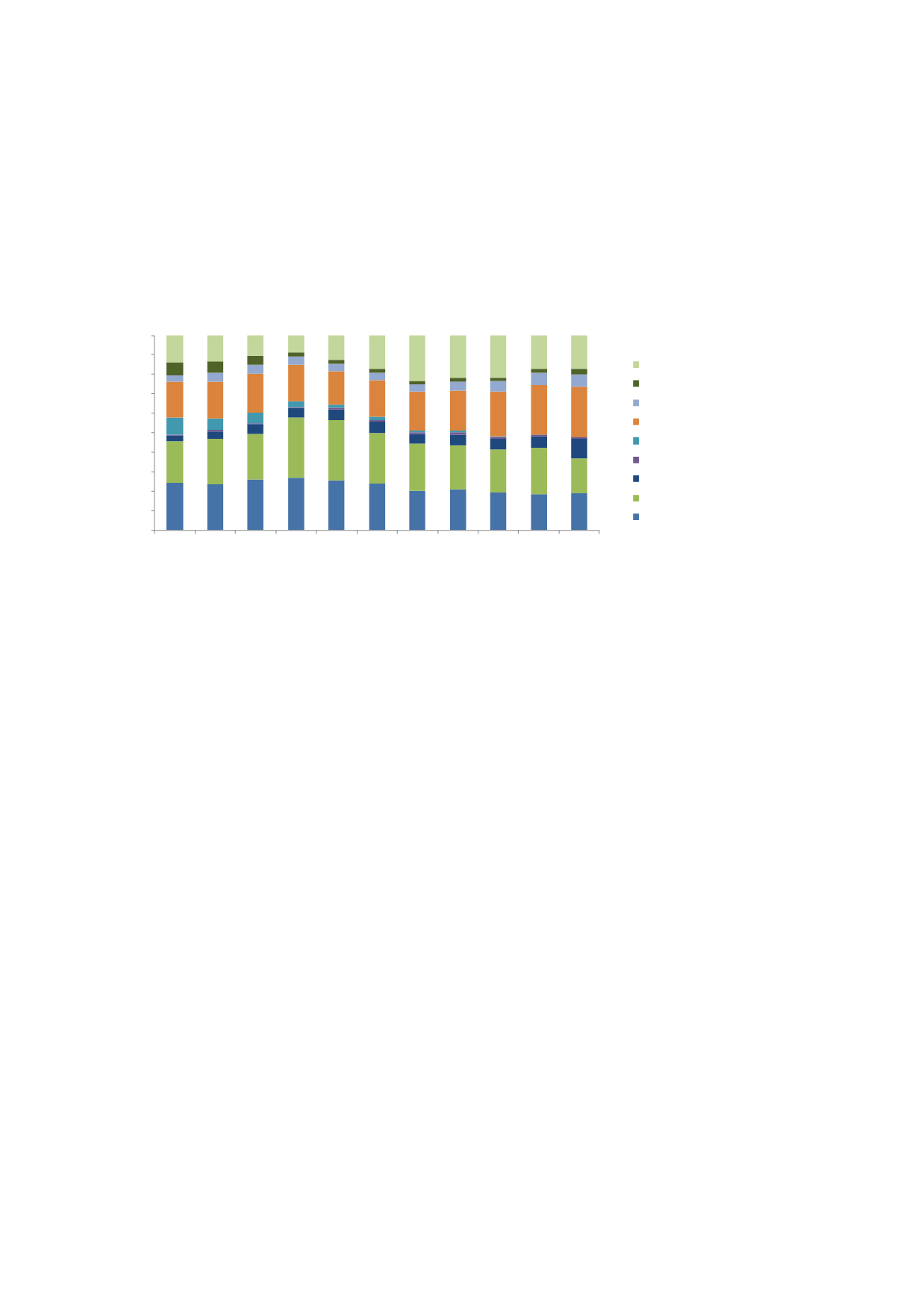

151
investors. As a result, short- to medium-term appetite has driven the maturity profiles
(average tenures of less than 5 years) of debt securities issued in Turkey. Greater participation
by NBFIs (e.g. pension funds, asset fund managers, insurance/
takaful
operators) that have
long-term
assets
to
match
the
long-term
financing
requirements
of
the
government/corporates will facilitate the issuance of long-dated papers. Chart 4.51 illustrates
the categories of investors for Turkey’s domestic government debt securities.
Chart 4.51: Domestic Government Debt – Classification by Holder (2006 To 2016)
0%
10%
20%
30%
40%
50%
60%
70%
80%
90%
100%
2006 2007 2008 2009 2010 2011 2012 2013 2014 2015 2016
Foreign holders
CBRT
Securities mutual funds
Corporate investors
Retail investors
Development and investment banks
Foreign banks
Private banks
Public banks
18
%
17
%
26
%
19
%
10
%
Source: Undersecretariat of Treasury
4.5.4
KEY FACTORS UNDERPINNING TURKEY’S SUKUK MARKET
The growth of Turkey’s sukuk market has been predominantly driven by sovereign issuances
and participation banks. Concerted efforts in the areas, as shown in Figure 4.16, underpin
Turkey’s progress in turning its sukuk market into viable financing solutions, to support the
country’s budget deficits and participation banks’ funding requirements. However, additional
measures need to be in place to heighten the appeal of sukuk in attracting more private sector
issuers.
Since the inception of the sukuk market in 2010, Turkey has made commendable progress in
contributing to the growth of global sukuk issuance. Nonetheless, there is still room for
improvement vis-a-vis accelerating the development of its sukuk industry. Figure 4.17
highlights the stages of progress made and its growth potential as a financing alternative in
funding economic development.
















